Based on the movement of pollen from anther to stigma, we can categorise the pollination process into two categories- Self and Cross-Pollination.
At the time of self-pollinations, the pollen travels from stigma to anther of the flower of the same plant. Whereas during cross-pollination, these movements occur between the anther and stigma of two different plants.
Self-pollination is a simple and straightforward process. It occurs in about 1/4th plant species of the earth. In comparison, cross-pollination is a complex mechanism that depends on certain agents. Around 3/4th of the plant species carry out the cross-pollination.
The main characteristic of self-pollination is that it maintains the pure line. It enhances the chance of genetic uniformity and reduces the chances of progeny variations.
In contrast, the pure line is disrupted in the cross-pollination due to the genetic variations.
In this section, we will elucidate the key differences between the self and cross-pollination.
Content: Self-Pollination Vs Cross-Pollination
- Comparison Chart
- Meaning of Pollination
- What is Self-Pollination?
- What is Cross-Pollination?
- Key Differences
- Conclusion
Comparison Chart
| Basis for Comparison | Self-Pollination | Cross-Pollination |
|---|---|---|
| Meaning | The inbreeding process in plants where pollens are transferred from the anthers to the stigma of the same flowers or another flower but of the same plant. | The outbreeding process between the two plants of the same species and different flowers. |
| It involves | Single plant. | Two different plants of the same species. |
| Occurs in | Self-pollination occurs in genetically same plants. | Cross-pollination occurs in genetically different plants of the same species. |
| External pollinating agents | There are no requirements of the pollinating agents. | External pollinating agents are required like water, animals, wind and insects. |
| Perfect flowers | Self-pollination occurs in perfect flowers only. | It occurs in both imperfect and perfect flowers. |
| Flowers of the plants | These plants have small flowers. | These types have the scent, nectar and bright-coloured petals. |
| Pollen grains | Less number of pollen grains are produced. | A large number of pollen grains are produced. |
| Reproduction | Geitonogamy and autogamy are the two types of the process of reproduction. | Allogamy kind of reproduction occurs here. |
| Genetic variability | With the self-pollination, pure line progeny is obtained and so no role in genetic variations. | With the cross-pollination, genetic variations and genetic recombinations are observed. |
| Characters | Desirable characters can be obtained, but undesirable character cannot be eliminated. | Desirable characters can be obtained and undesirable character can be removed. |
| Offspring | It results in homozygous offspring. | It results in heterozygous offspring. |
| Examples | Wheat, rice, pea, orchids, barley, tomatoes, peaches, apricot. | Mulberry, maize, pumpkins, strawberries, blackberries, plums, grapes, daffodils, maple, catkins, grasses. |
Meaning of Pollination
It is the process by which the pollen grains from anther travel to the flower’s stigma to fertilise with the ovule. The target of every living organism is to create their young ones and transfer their characters to them.
Pollination is the process occurring in plants that leads to the production of seeds. When pollens travel between different plants the genetic information get passed.
What is Self-Pollination?
Self-pollination occurs when the transmission of pollens within the same plant. Here, the transmission is quite simple and mostly direct. About 1/4th of the total plant species on this earth perform self-pollination.
In this type of pollination, a flower has the capability to produce seed by pollinating itself. Monoecious or hermaphrodite species are mainly known for self-pollinating.
Definition of Self-Pollination
We can define self-pollination as:
The process where the pollens are transferred from anther to the stigma of the same flower or another flower of the same plant.
Examples of Self-Pollination
A few examples of self-pollinating plants are wheat, rice, pea, orchids, barley, tomatoes, peaches, apricot,
Characteristics of Self-Pollination
- Self-pollination is possible in both open and closed flowers.
- There is mostly no need for any external agencies or assistance for self-pollinating.
(Except in geitonogamy) - For an unsexual or a bisexual flower, the maturation of the female and male gamete at the same time is essential.
- It maintains the genetic uniformity and the useful traits of the plant.
- It develops no new variety of flowers or newer traits.
- Due to the absence of genetic recombination, the pure line remains conserved.
- The plant generates a lesser number of pollens. This is because there is an assurance of successful pollination.
- The plant generates small flowers where this pollination occurs.
- Self-pollination produces homozygous progenies.
Types of Self-Pollination
Types based on the pollen transfer
There are three sorts of self-pollination on the basis of transmission of pollen:
1. Autogamy
Here, the pollen travels from anther to the stigma of the same flower. For autogamy to occur, synchronisation between the anther and stigma is highly important. With this process, the flower reproduces within itself.
2. Geitonogamy
Pollen gets transferred from anther of one flower to another flower of the stigma of the same plant. The different flowers growing adjacently on the same branch undergo geitonogamy.
3. Cleistogamy
Here, self-pollination occurs when the flower is in a closed state, i.e., in a bud form.
Types based on the Occurrence
1. Free Self-Pollination
Takes place in full Blooming flower. Here, cross-pollination is free to occur.
2. Forced Self-Pollination
Occurs in buds. Here, there is no chance of cross-pollination.
Advantages of Self-Pollination
- As the recombination doesn’t occur, thus there is no chance of exchanging genetic information. For this reason, the desired traits remain preserved for several subsequent generations.
- The plant has to produce fewer pollens due to the higher probability of fertilisation.
- The progenies bear the exact characters as that of the parents.
- The self-pollinating plants exhibit consistency in their growth. And they require a shorter time to grow.
- It increases the possibility of fertilisation as it can occur even in closed flowers.
- Pollination can occur even in the absence of any external aid.
Disadvantages of Self-Pollination
- The immunity of these plants is quite low, due to which they are vulnerable towards diseases.
- The yield of the self-pollinating plants is quite low.
- Self-pollination restricts the plants’ adaptability towards environmental changes.
- The plant continues to carry the unwanted or harmful traits for several generations.
- This type of pollination shows no any significant contribution in the evolutionary processes.
- Diminishes the genetic diversity of plants in the environment.
What is Cross-Pollination?
Around 3/4th of the total plant species carry out cross-pollination. Here, the transfer of pollen occurs between different plants of the same species. It involves the mixing of traits and genetic information. Thus this pollination manifests a great evolutionary benefit to the plants.
Definition of Cross-Pollination
We can define cross-pollination as:
The process where the pollens are transferred from the anther of one flower to the stigma of the flower on another plant.
Or
When the pollens travel from anther to the stigma of different flowers of two different plants, it is cross-pollination.
Example of Cross-Pollination
Mulberry, maise, pumpkins, blackberries, plums, grapes, daffodils, maple, grasses are examples of cross-pollination.
Characteristics of Cross-Pollination
- The destination of the pollen in this pollination is a different plant of the same species.
- This pollination shares and crosses the genetic data of several plants. For this reason, the new genetic variety of the population increases.
- The transfer of pollens occurs between genetically different flowers.
- It reduces the genetic uniformity while intensifying the genetic variations.
- Only the blooming flowers can carry out the cross-pollination.
- These plants make themselves attractive in order to lure external agents.
For example, juicy nectar, pleasant fragrance, bright-coloured flower petals etc. - It maintains the gene pool de to constant outbreeding.
- Cross-pollination necessitates some external aid to occur. It can either be a biotic agent like insects, birds, animals etc. . Or an abiotic agent such as wind and water.
- The plants carrying out cross-type pollination produce a large quantity of pollen. This is to enhance and assure the chances of successful pollination.
- These plants produce heterozygous progenies.
Types of Cross-Pollination
We can classify the cross-pollination based on the pollinating agents. It can either occur by biotic factors or abiotic factors.
Caused by Abiotic Agents
Entomophily
It is the type of cross-pollination that occurs with the help of insects. The insects are among the most significant pollinators of the environment. Plants have certain specialised properties to attract insects towards them. This may include good smell, bright flowers, nectar etc.
As soon as the insect comes to the flower, the pollen gets stuck over its body. Further, it drops those stuck pollens on the stigma as it moves to other flowers. In this way, they carry out pollination.
For example Bees, butterflies, fruitflies etc.
Note: The bees are responsible for most of the cross-pollination occurring around.
Ornithophily
Here, the cross-pollination occurs by the birds. Only some birds with small sizes and long beaks can carry out ornithophily. The process of ornithophily is the same as that of entomophily. Here too, the pollen gets attached to the body and are further transported.
For example Sunbirds, hummingbirds etc.
Chiropterophily
The bats carry out chiropterophily. They can only pollinate those flowers that are large-sized and possess elongated pedicels. Since they are nocturnal, the colour of the flower not really lures them much. Instead, the plant attracts the bats with a strong fruity smell.
Some bat pollinated plants include Bauhinia, Anthocephalus etc.
Malacophily
When the snails carry out the pollination, it is malacophily. Plants like chrysanthemum, snake plant, Lemna etc., undergo malacophily.
Caused by Abiotic Agents
Anemophily
The wind is the most important abiotic agent that performs most pollination. The pollination by wind is anemophily. These plants produce very light weighted, dry and dusty pollens. This is to ease their movement with the wind.
Some anemophilous plants involve grasses, cereals, cotton etc.
Hydrophily
It is the pollination that occurs with water. Mainly the plants situated on water banks or the aquatic plants rely completely on the water for pollination. The water can carry the pollens to very long distances, sometimes even hundreds of miles.
Some hydrophilic plants are Zostera, Vallisneria etc.
Advantages of Cross-Pollination
- It can eradicate all unwanted and undesirable traits.
- It enhances the adaptability of the progenies. Thereby it makes the plants immune towards environmental changes.
- The characteristics are genetically recombined, thereby increasing the genetic variability of the population.
- This type of pollination enhances plant yield.
- New genetic traits are often generated due to constant outbreeding.
Disadvantages of Cross-Pollination
- Cross-pollination can never maintain a pure line of genes.
- There is a high probability of eradicating the desirable traits during repeated recombination.
- It can only occur when the flower is in its blooming state.
Key Differences Between Self Pollination and Cross-Pollination
- Self-pollination is the inbreeding process since it occurs between two flowers of the same plants. Cross-pollination occurs between the two plants of different flowers of the same species. Thus it is the outbreeding process.
- The pollens of self-pollinating plants move from anther to stigma of same flower or other flowers of same plant. But in cross-pollination, the pollens pass from anther to stigma of flowers of another plant of same species.
- In self-pollination, there is the involvement of a single plant. While in cross-pollination, two different plants of the same species.
- External pollinating agents are not required in self-pollination. On the contrary, there is a need for external pollinating agents like air, water etc.
- The self-pollinating plants generate very pollen grains. But the cross-pollinating plants produce the pollen in a large amount.
- Self-pollination results in homozygous offspring, whereas cross-pollination results in heterozygous offspring.
- Genetic uniformity and pure line progeny are generated by self-pollination. But in the cross-pollination, pure genetic uniformity is lost.
Conclusion
We can summarise the article by saying that we came to know about the types of reproduction and fertilization that occur in planta and are of two types. Self-pollination is equally important as cross-pollination, and are used to increase the yield and varieties of crops. As sometimes we need the same range of plants every time, and sometimes modifications are also required and also it is the need for the plants to get cross-pollinated.

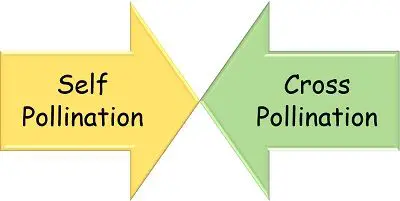
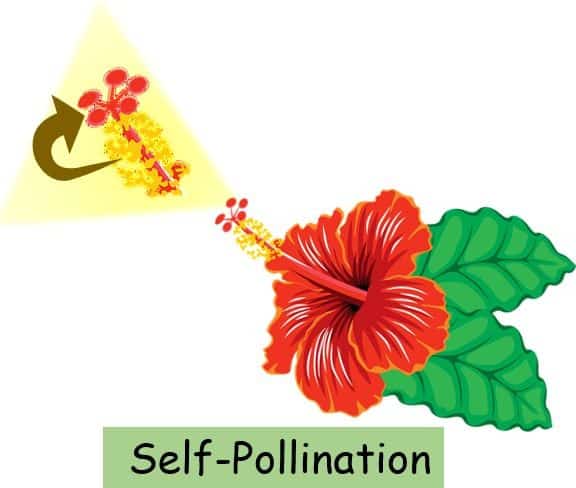
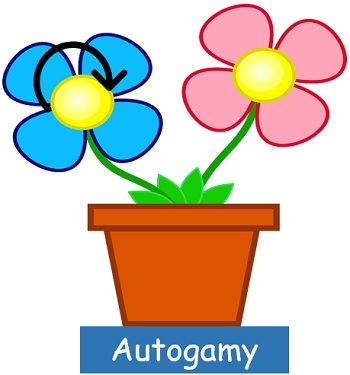
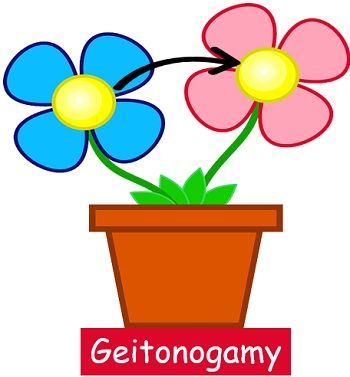
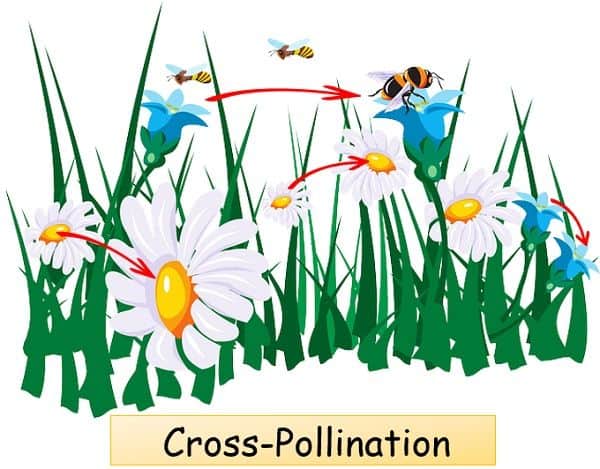
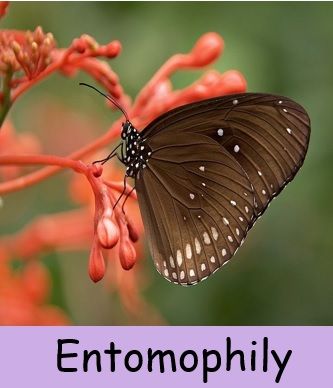
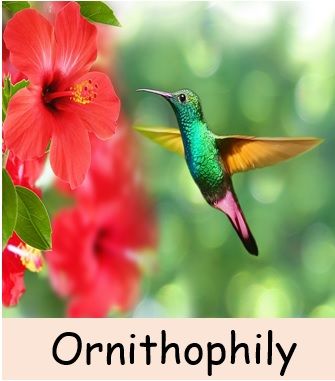
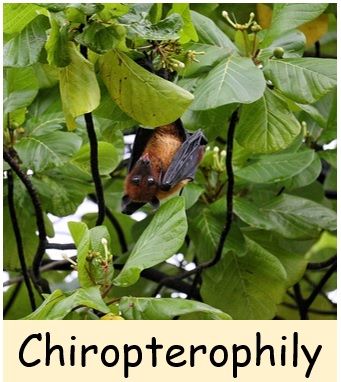
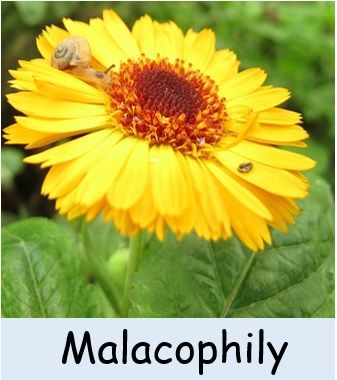
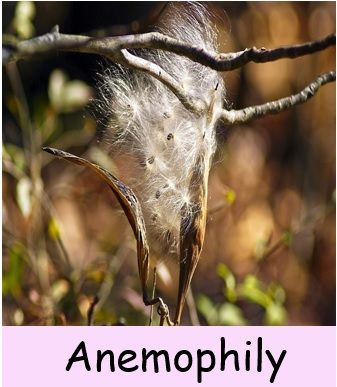

Leave a Reply